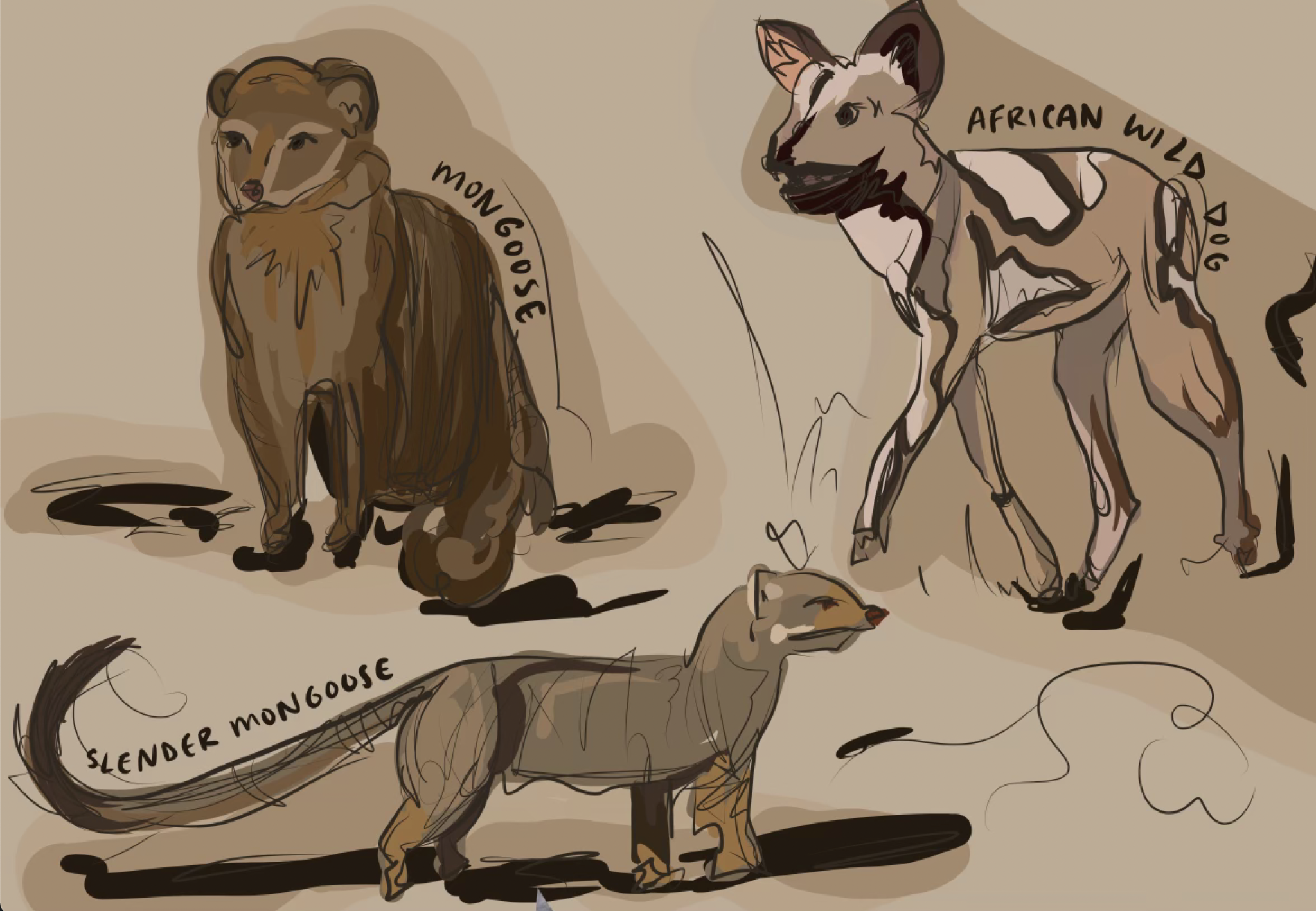Yale-led study reveals habitat loss threats for 91 African carnivores
A study at the School of the Environment produced a novel strategy for assessing range contraction risks as part of conservation planning efforts.

Clarissa Tan, Staff Illustrator
A new study raised fresh concerns of habitat loss for 91 African carnivores that are listed as “least concern” by conservation groups.
Nyeema Harris, a professor of wildlife and land conservation at the Yale School of the Environment, found evidence that the species’ geographic ranges are at risk of shrinking. Her study, titled “Socio-ecological gap analysis to forecast species range contractions for conservation,” evaluates geospatial models to demonstrate the risks in various African regions.
“Species distribution maps are commonly used to inform our understanding of spatial patterns of biodiversity that in turn govern our research and conservation priorities,” Harris told the News. “We aimed to improve the information gleaned from these maps for a very important group of animals in an increasingly dynamic geography.”
Harris explained that the research compiled different ecological and external variables, including assets such as biodiversity and threats such as human land modification, to determine the available conservation capacity for carnivores.
Overlaying these factors allowed the team to identify when threats exceeded assets, signaling a risk of contraction in certain areas. They concluded that the carnivores had an average of 15 percent of their range areas at risk, with some habitats indicating degradation threats as high as 70 percent.
“As an advocate for data-driven management and decision making, I focus on producing generalizable quantitative findings and on developing data-centric approaches, such as the one featured in this project,” said Gabriela Nunez-Mir, assistant professor of biological sciences at the University of Illinois Chicago and a collaborator on the study.
The inclusion of distinct variables in range mapping with a data-driven approach in this study led to the formation of a new method of assessing species’ populations and ranges.
Another collaborator on the study, human ecologist Daniel Mwamidi, pointed to his firsthand observations of carnivore population decline in southern Kenya as both a reflection of the data and the main source of his interest in this study.
“Carnivores are part of our communal lives and are deeply embedded in our culture and thus these species are an important facet in my community as well as other communities across Africa,” Mwamidi said.
He described areas in Kenya that were named after carnivorous species, explaining that locals used to associate the abundance of carnivorous species with the prosperity of the region.
Mwamidi pointed to the shrinking populations of carnivores such as spotted hyenas and dwarf mongooses which, he explained, could be seen on a daily basis by these communities in years prior.
“Spotted hyenas and dwarf mongooses are classified as least concern in the IUCN’s red list of species and as such, does not reflect the reality on the ground,” Mwamidi noted.
In addition to bringing attention to threats of habitat loss for these species, the study emphasized the need to analyze human interactions with animals, mentioning some examples of indigeneous African communities that have close cultural ties with carnivores.
Harris, too, said that a deep understanding of diverse cultural perspectives and different forms of knowledge, living and communication is integral to studying ecosystems and animal populations in relation to local communities.
“Local communities in Africa are better placed to be major stakeholder for future conservation strategies of carnivores because they are the ones who interact [with] these species,” Mwamidi agreed.
The study was published on Sept. 27 in the Proceedings of the National Academy of Sciences.







